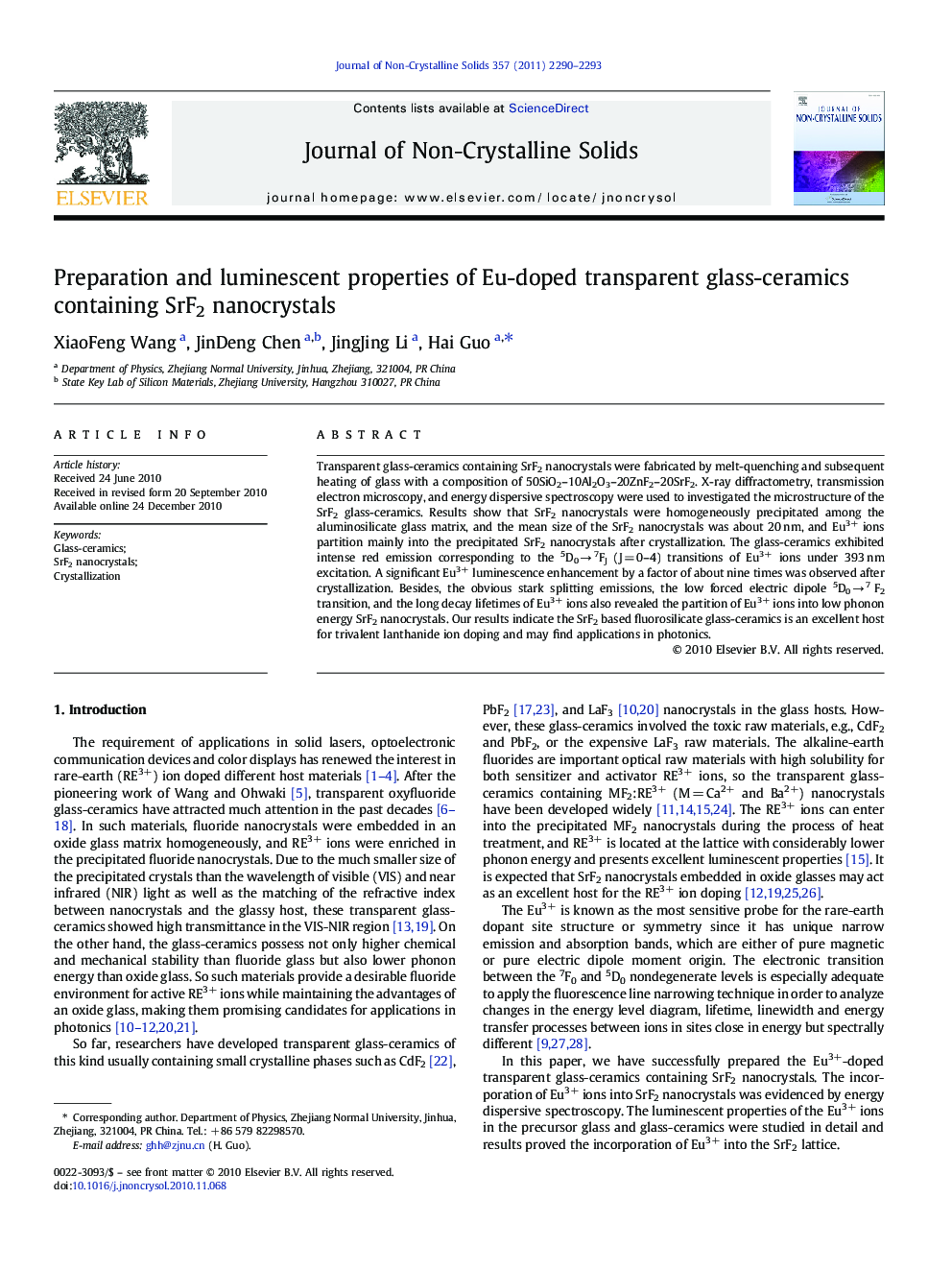| کد مقاله | کد نشریه | سال انتشار | مقاله انگلیسی | نسخه تمام متن |
|---|---|---|---|---|
| 1481584 | 1510484 | 2011 | 4 صفحه PDF | دانلود رایگان |

Transparent glass-ceramics containing SrF2 nanocrystals were fabricated by melt-quenching and subsequent heating of glass with a composition of 50SiO2–10Al2O3–20ZnF2–20SrF2. X-ray diffractometry, transmission electron microscopy, and energy dispersive spectroscopy were used to investigated the microstructure of the SrF2 glass-ceramics. Results show that SrF2 nanocrystals were homogeneously precipitated among the aluminosilicate glass matrix, and the mean size of the SrF2 nanocrystals was about 20 nm, and Eu3+ ions partition mainly into the precipitated SrF2 nanocrystals after crystallization. The glass-ceramics exhibited intense red emission corresponding to the 5D0 → 7FJ (J = 0–4) transitions of Eu3+ ions under 393 nm excitation. A significant Eu3+ luminescence enhancement by a factor of about nine times was observed after crystallization. Besides, the obvious stark splitting emissions, the low forced electric dipole 5D0 → 7 F2 transition, and the long decay lifetimes of Eu3+ ions also revealed the partition of Eu3+ ions into low phonon energy SrF2 nanocrystals. Our results indicate the SrF2 based fluorosilicate glass-ceramics is an excellent host for trivalent lanthanide ion doping and may find applications in photonics.
Journal: Journal of Non-Crystalline Solids - Volume 357, Issues 11–13, June 2011, Pages 2290–2293